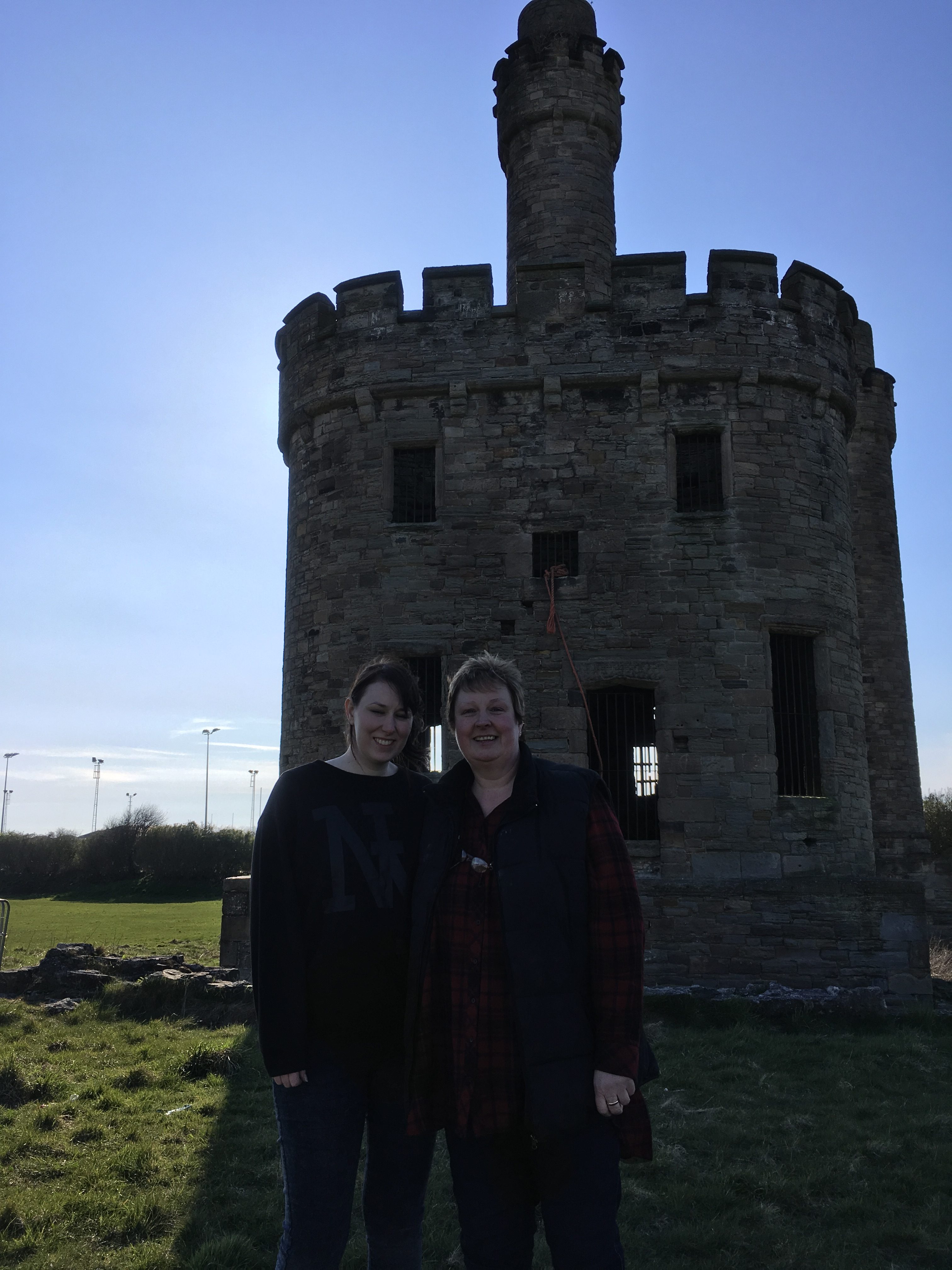We were joined on our Jane Pit project today by Lynn and Sarah, a dynamic mother-daughter duo with bags of enthusiasm.
Sarah had convinced her mum to sign up with her, and neither of them had ever done archaeology before, so it was a brand new experience for both of them. We thought it would be good for Lynn to write us a blog on what her first ever day doing archaeology was like, so here it is in her own words!
“We met at Workington TA Centre for a briefing and health and safety talk, after which we were shown around the dig site. Chris told us about what had been happening in the trenches on the previous days and some of the history of the pit.
Chris then gave everyone a demonstration on how to use the tools of the trade and gave us a chance to say which trench we would like to dig the most. Each trench was set out to find different aspects of the running of the mine. I managed to work in all three trenches throughout the day.
The first trench I worked in was trench number two. There are stories that Jane Pit had a horse gin, and we were looking for evidence that it really existed, and how it might have worked. So far there are six layers of trench two. There is a layer of topsoil, going down on to gravel and rubble. There is a surface of larger stones, a lot of coal and even a bright red type of soil. It is very clear that there was some kind of circular structure there. So far in trench two there have been finds of brick, a clay pipe and a lot of metalworking waste.
In trench number three, there is an indication that there was a wall and large pathway or road up to the front of the mine. After using a trowel to dig and scrape away the heavy clay slowly brickwork and uneven stones were appearing. Each layer tells us new information, and all of it needs to be photographed and recorded, then the work is repeated, gently peeling away to reveal another layer.
The last trench, number four, is where the cottages were along the roadside. Pottery and glass were found and there are things that are starting to look like walls and base stones. The cottages were demolished in the 70s, so many local people have been visiting and telling us what they remember about the buildings, and we have even been shown some photos from local people.
It’s been nice to learn how our town became the industrious place it was in the 70s and 80s and how it all began 200 years ago in the 1800s. It’s been fascinating to discover how the people who lived back then worked so hard and made changes with effects that have rippled through the community and continue to the present day.
I would recommend to anyone to come and visit or take part in the archaeological dig Jane Pit. Every one of the DigVentures team were brilliant, they were helpful, polite and attentive. My daughter and I have been so thrilled to be a part of it, and we hope to be able to do it again in the future.”
Lynn, we’re so glad you and Sarah enjoyed your day, and we really hope to see you again in the future. Thank you so much for coming along and for all your hard work!
